
There are many lakes and mountains around the world, though only a few have an aura and character that can continue to attract people over the ages. In the remote western region of Tibet lies a triad formation of Mount Kailash, Lake Mansarovar and Lake Rakshastal, possessing a unique magnetic force that has for centuries attracted the followers of Buddhism, Hinduism, Jainism and Bon religions.
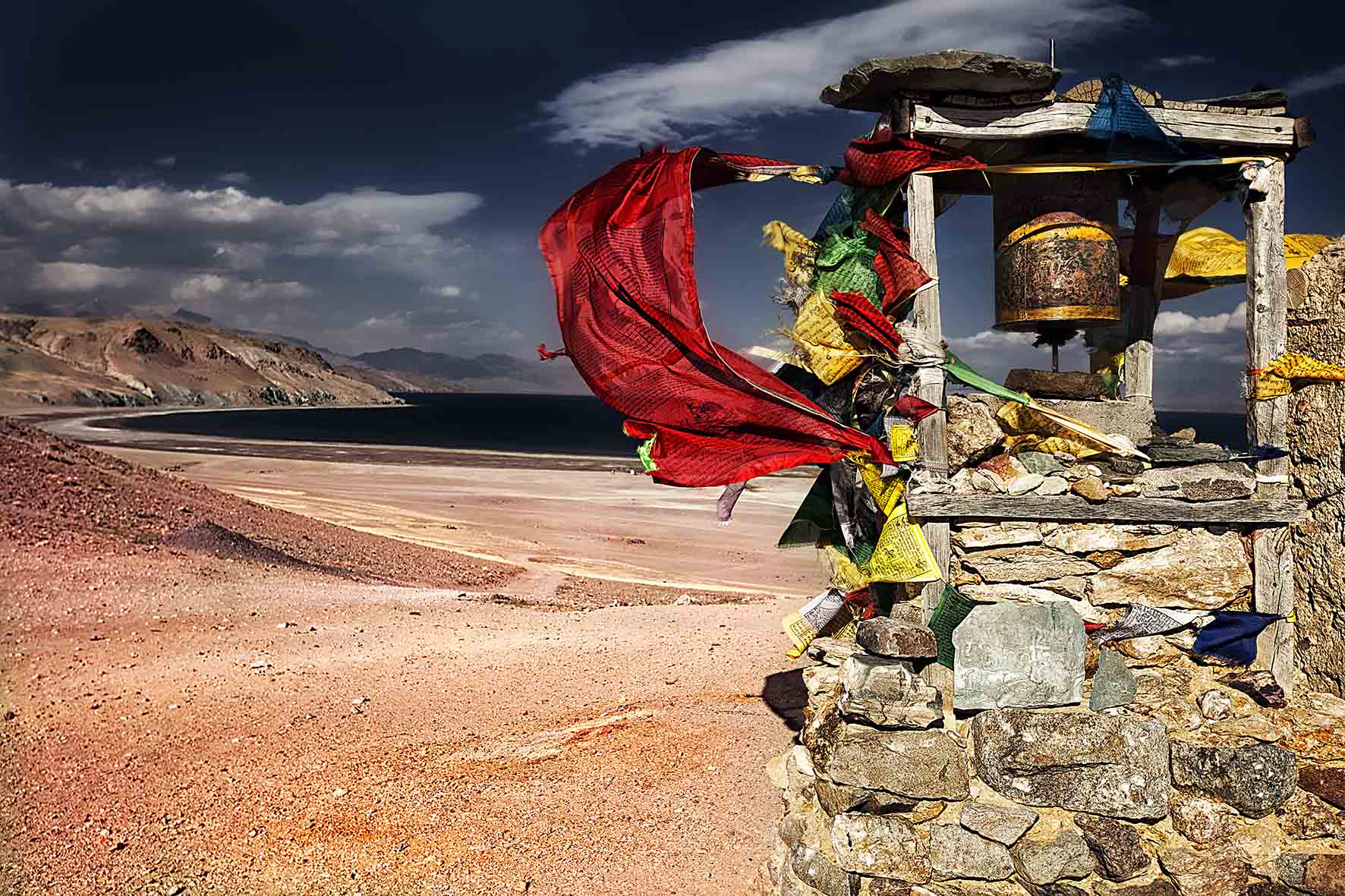
Photo: Lake Mansarovar, Tibet
Mount Kailash (Tibetan : Kangriboqe, Chinese : Gang Ren Bo Qi Feng) at a height of 6,638 metres, stands isolated on the Tibetan plateau. It’s four sides are so regular that it appears to be the dome of a temple, rising from the base of the Tibetan plateau at 4,572 metres. Lying 40 km south of it, are the lake Mansarovar (Tibetan : ma-pham g.yu-mtsho, Chinese : Ma Pang Yong Cuo) and lake Rakshastal (Tibetan : Lagngar Co, Chinese : La Ang Cuo).
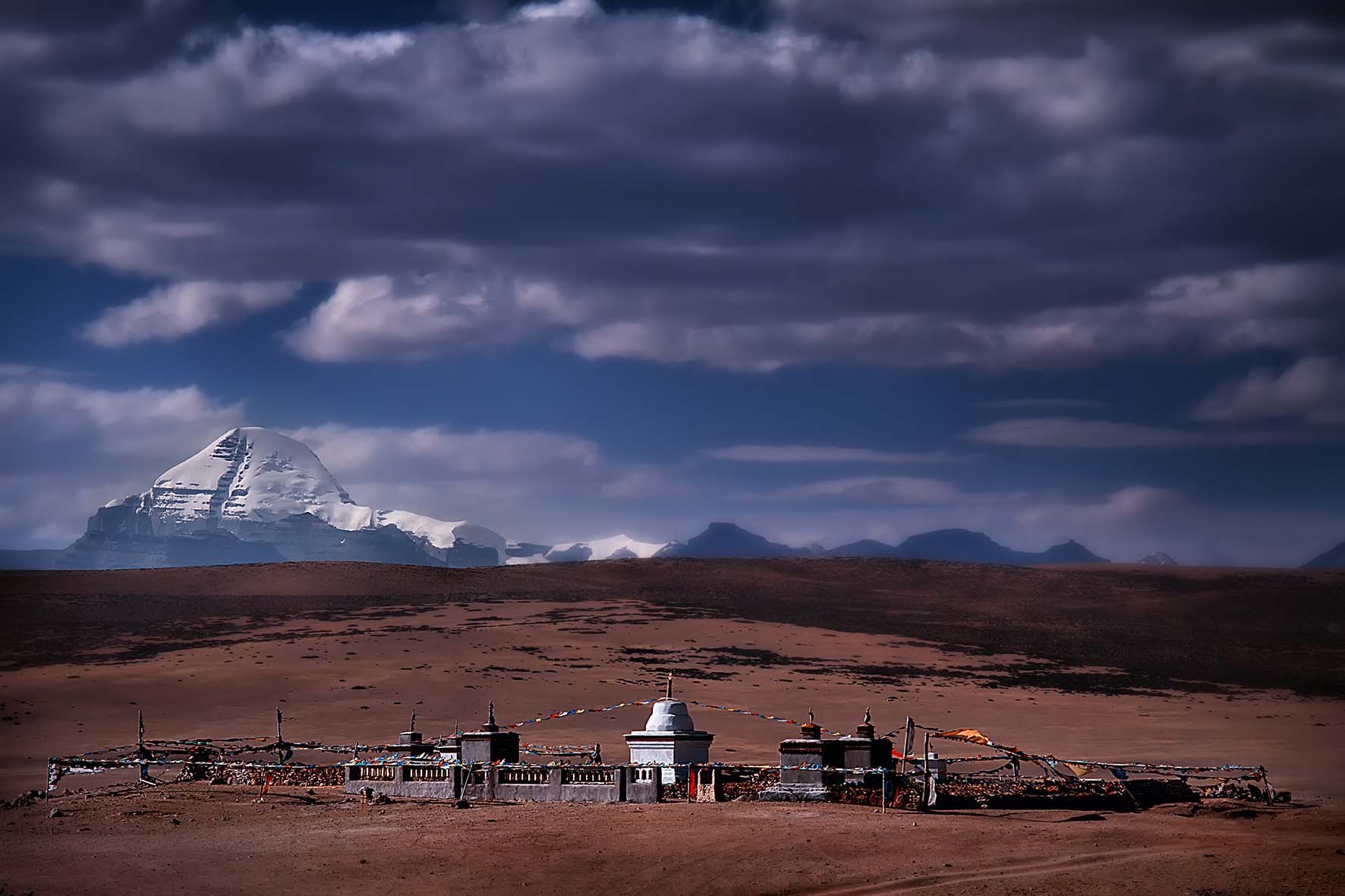
Photo: Mount Kailash – 40 km south of Lake Mansarovar. The buddhist temple in foreground is on the bans of the lake Mansarovar

Lake Mansarovar lies at 4,600 metres and is the world’s highest fresh water lake, supporting countless species of fishes, birds and plants. It is nestled in the massif around Mount Gurla Madhata (Tibetan : Naimonanyi, Chinese : Namu Nani), which is at a height of 7,694 metres, rising south of the lake.
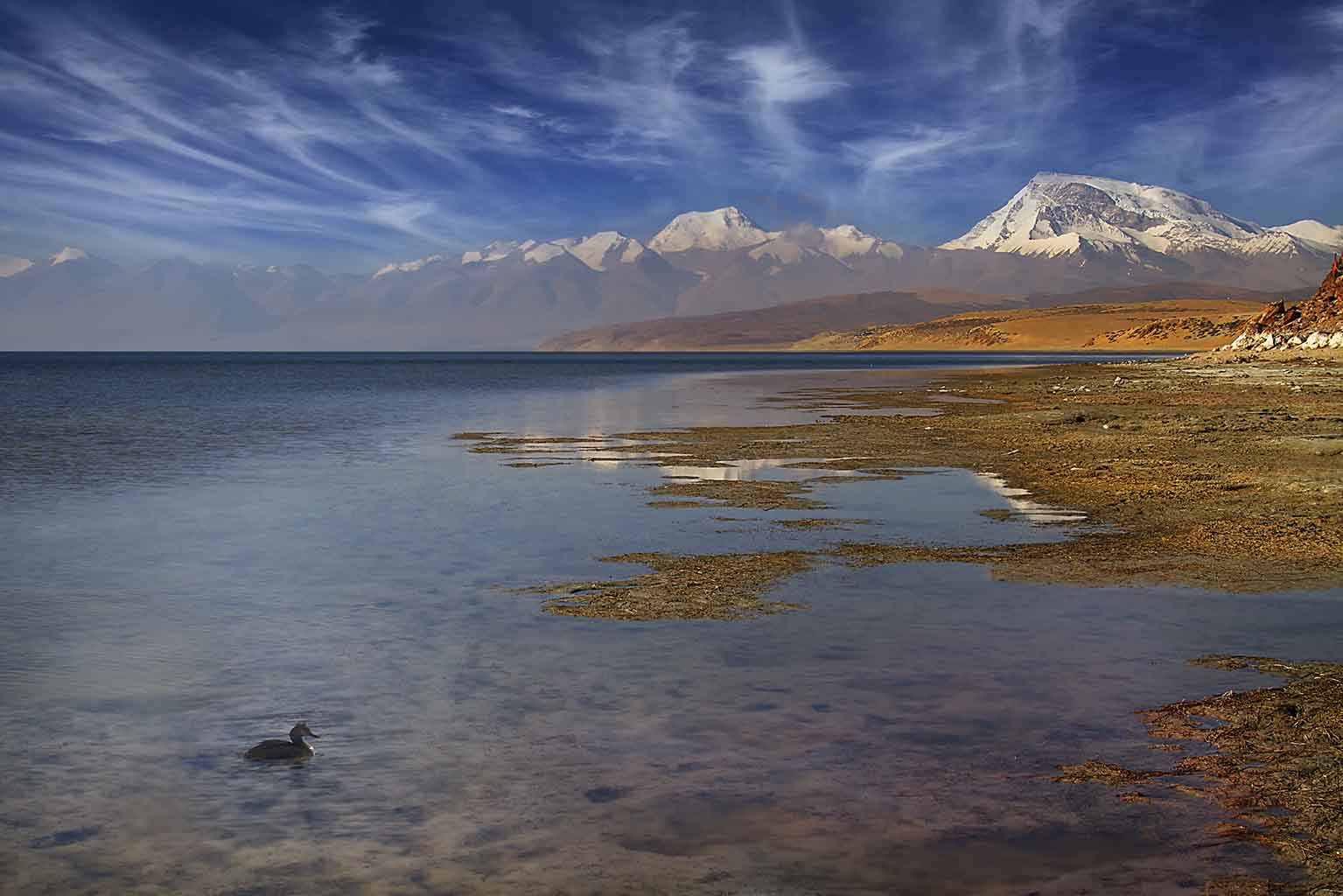
Photo: Lake Mansarovar in Tibet is the world’s highest freshwater lake
Lake Rakshastal, at a height of 4,292 metres, lies a short distance east of Mansarovar. In stark contrast, this is a salt water lake that supports few forms of life.
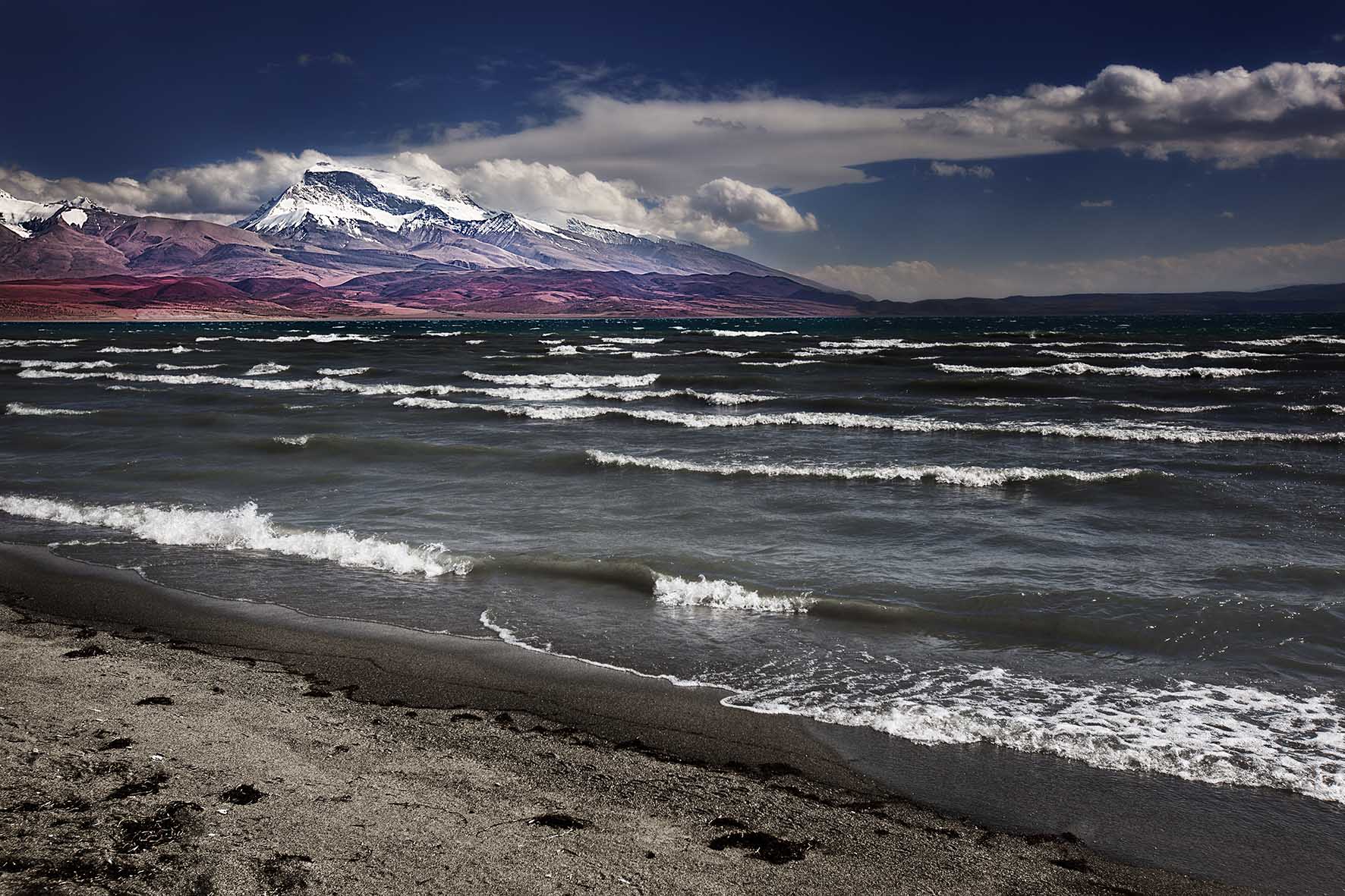
Photo: Lake Rakshastal, a salt water lake is in stark contrast to the Lake Mansarovar, a short distance from it
Through its fresh and calm water, Lake Mansarovar invokes a feeling of peace, while bareness and strong winds found at Lake Rakshastal create a feeling of harshness and turmoil. The former is situated towards east and latter to the west. In Tibetan art, the rising sun from east therefore results in pictorial representation of Mansarovar as Sun and that of Rakshastal as Moon. Interestingly, the aerial views of the two lakes are also in stark contrast. Mansarovar with it’s circular form, does indeed look like the Sun, while the semi-circular form of Rakshastal evokes the crescent moon.

Map: Overview of Lake Mansarovar, Lake Rakshastal and Mount Kailash
The positive, peaceful aspects of Lake Mansarovar have therefore resulted in it’s association with gods, whereas the opposite traits of Lake Rakshashtal have linked it to demons. And to the north of these lakes, stands the mighty Mount Kailash, representing metaphysical consciousness.
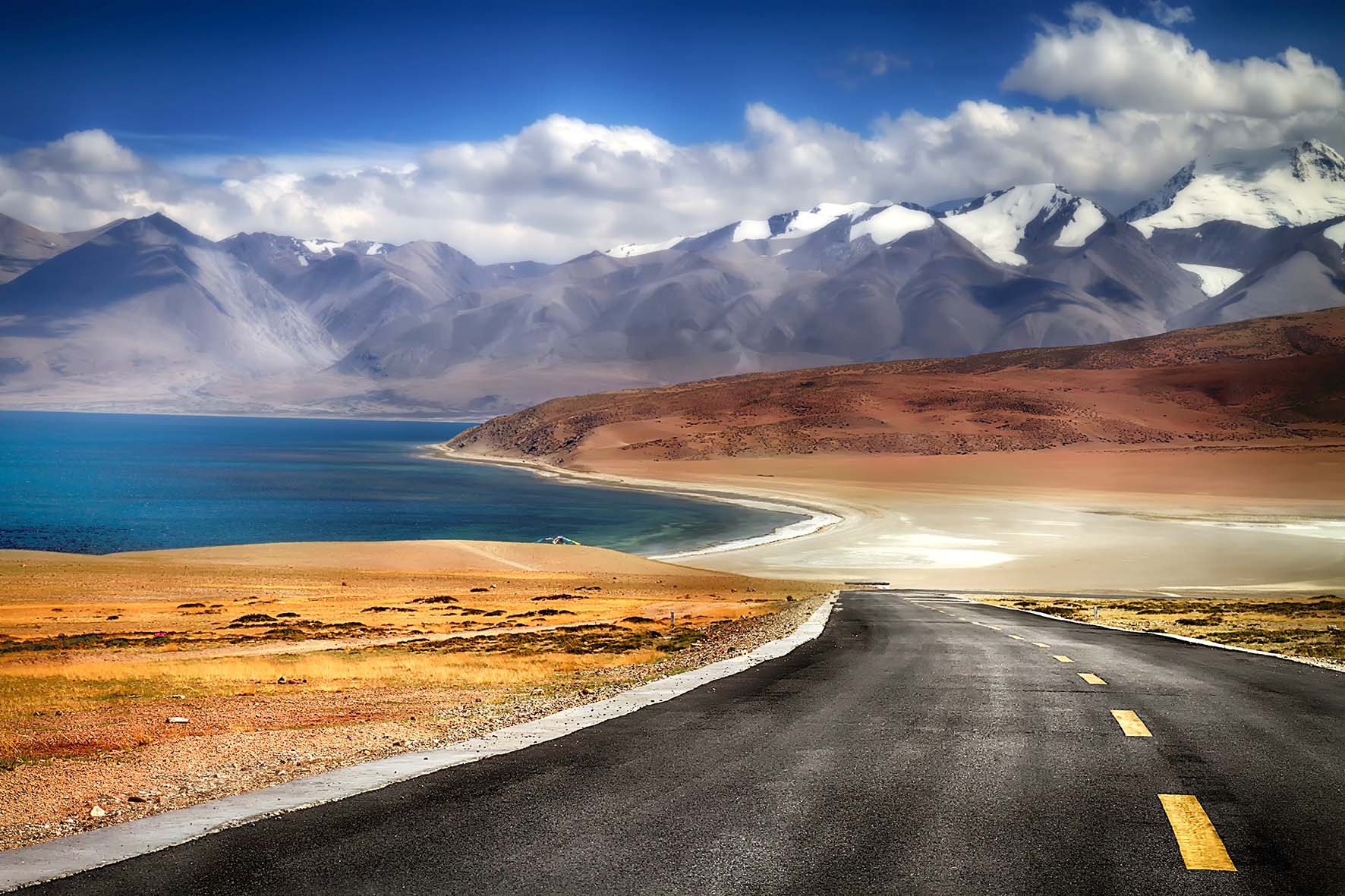
Photo: Serene environment of Lake Mansarovar
Aspiring pilgrims to this region, first take a dip in the Lake Mansarovar, an act that is believed to bring them closer to the positive forces that represent the gods. They then proceed to Mount Kailash to perform a Kora (religious walk circling the mountain) over a two – to – three day period, which signifies the purification of human Consciousness. It is also very interesting that none of the pilgrims ever aspire to visit Lake Rakshastal, despite being no less beautiful, in it’s own way.
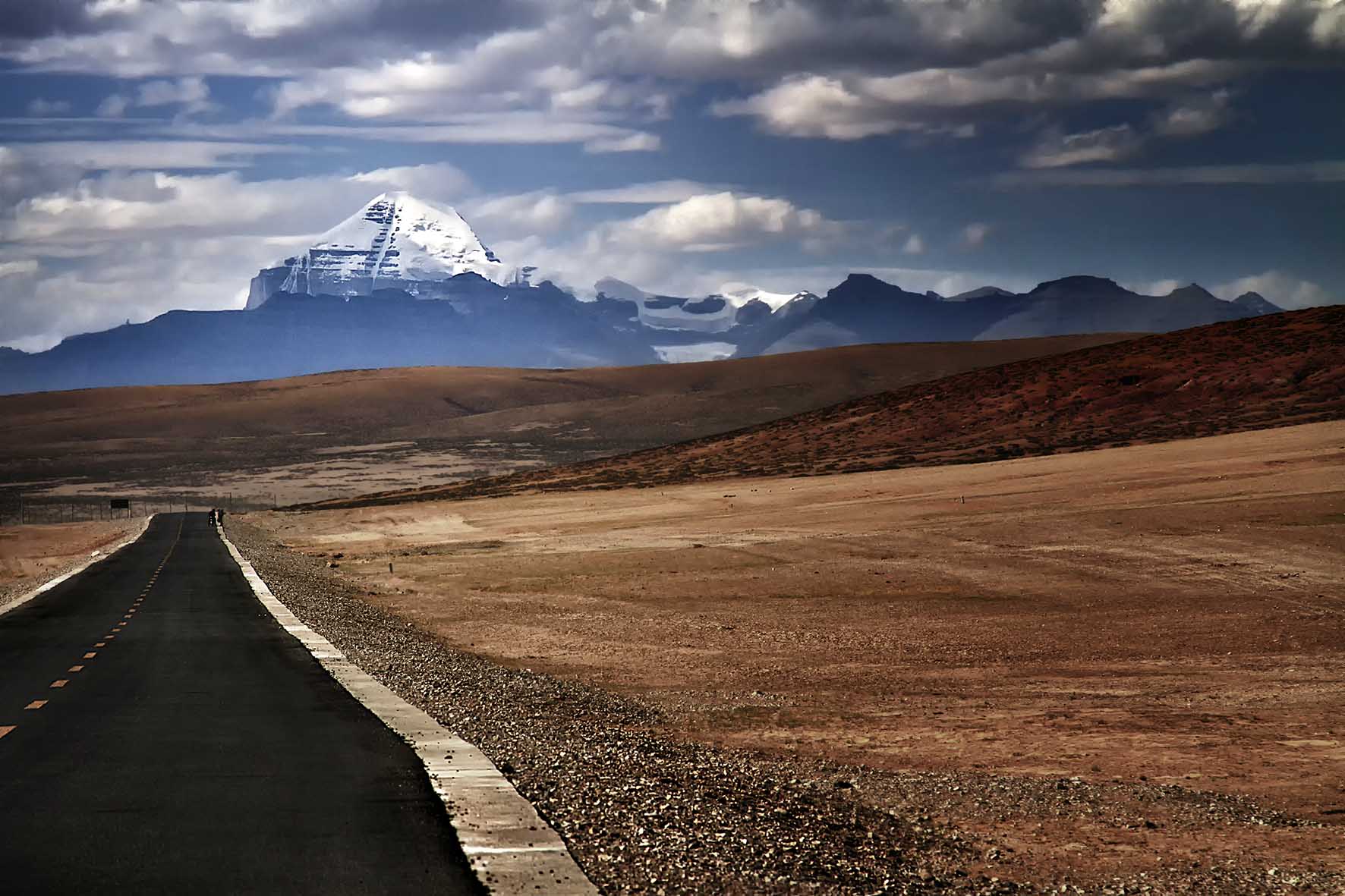 Photo: After a dip at Lake Mansarovar, pilgrims proceed to Mount Kailash
Photo: After a dip at Lake Mansarovar, pilgrims proceed to Mount Kailash
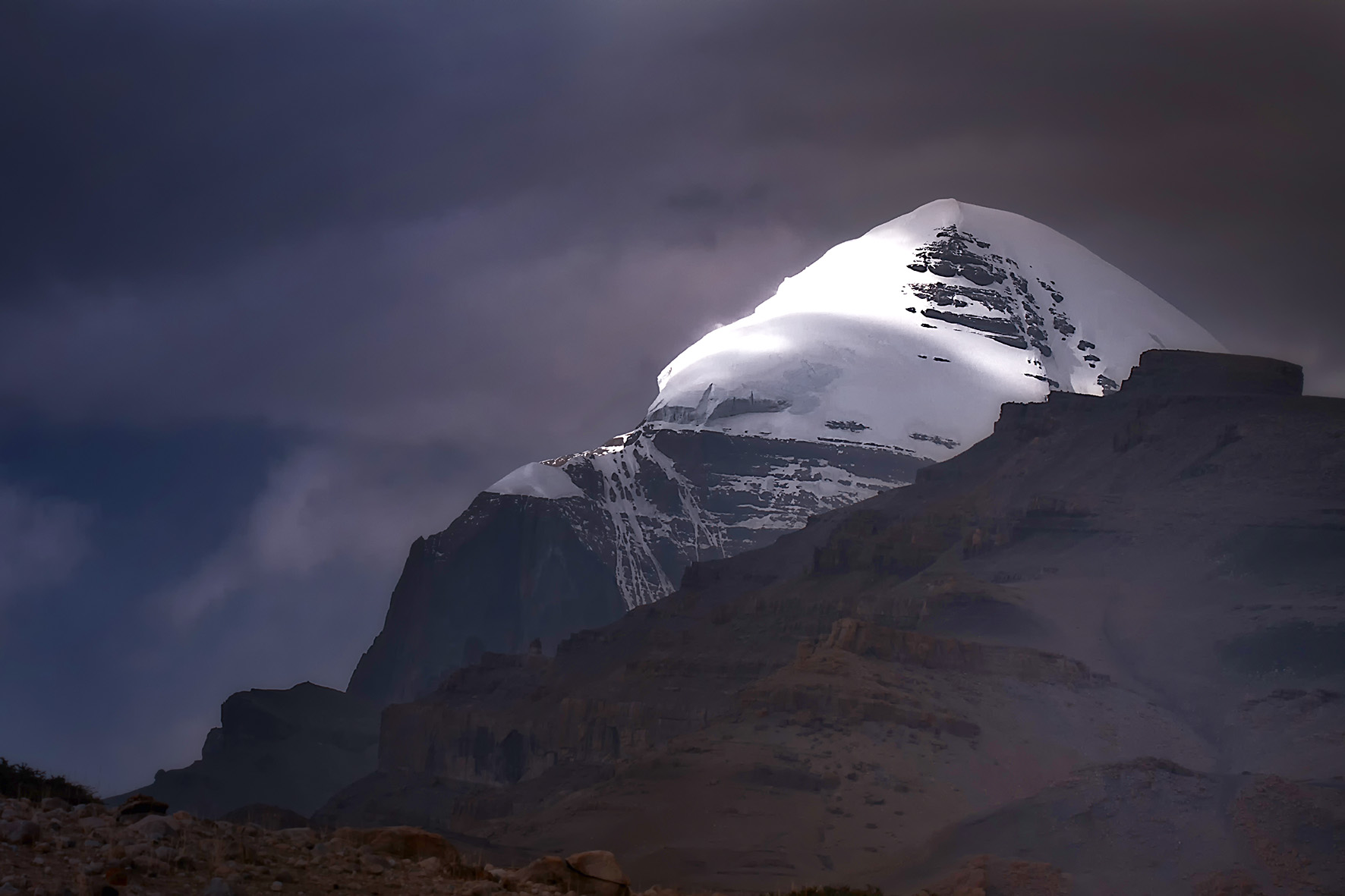 Photo: Closeness to Mount Kailash is believed to bring the pilgrim closer to the positive forces
Photo: Closeness to Mount Kailash is believed to bring the pilgrim closer to the positive forces
To appreciate the association of Consciousness with Mount Kailash, one needs to see an aerial view of its landscape. Within it’s proximity, radiating like spokes from the hub of a wheel, four mighty rivers of Asia take course towards the east, west, northwest and south. These rivers are the Brahmaputra (Tibetan : Tamchog Khabab), Indus (Tibetan : Senge Khabab), Sutlej (Tibetan : Langchen Khabab) and Karnali (Tibetan : Magcha Khabab). The Brahmaputra and Karnali (the source of the Ganges) drain into the Bay of Bengal, while the Sutlej and Indus find their way to the Arabian Sea.

North-South cross-section of Tibetan Plateau
 Photo: On the left stands the Mount Kailash (a spec in the photo) and on the right is the Lake Mansarovar
Photo: On the left stands the Mount Kailash (a spec in the photo) and on the right is the Lake Mansarovar
Water is an essential element to create and sustain life. Since life springs in physical elements through presence of Consciousness, the Kailash landscape, which is the source of water for the Asian subcontinent, is therefore associated with Supreme Consciousness itself.
Modern day politics has now created distinct nation based landmasses, but in the past this region was a confluence of cultures from India, Nepal, Tibet and China; the influence of language in the popular names of the mountains, lakes and rivers is clear evidence for this. While nestled in the Tibetan territory, they are still popularly called by their Indian (Sanskrit) names.

To Hindus & Buddhists, Mount Kailash is metaphysically referred as Meru, and seen to be the centre of universe. Just as subatomic particles are essentially microcosmic replicas of the vast universe, so too is the psychophysical organism of the human body. Meru in the human body is represented by the point inside the nervous system into which the spinal cord extends. It is believed that human Consciousness resides here. So is the metaphysical location of Mount Kailash is seen to be the consolidation of universal Consciousness.
To Hindus, Mount Kailash is the seat of Lord Shiva, the form of God that destroys ignorance and illusion. It is on this mountain that he sits in a state of infinite meditation. Devout Hindus view the three horizontal lines on the South face of Mount Kailash, where the steep gradient cannot support snow, as the symbol of the followers of Lord Shiva.
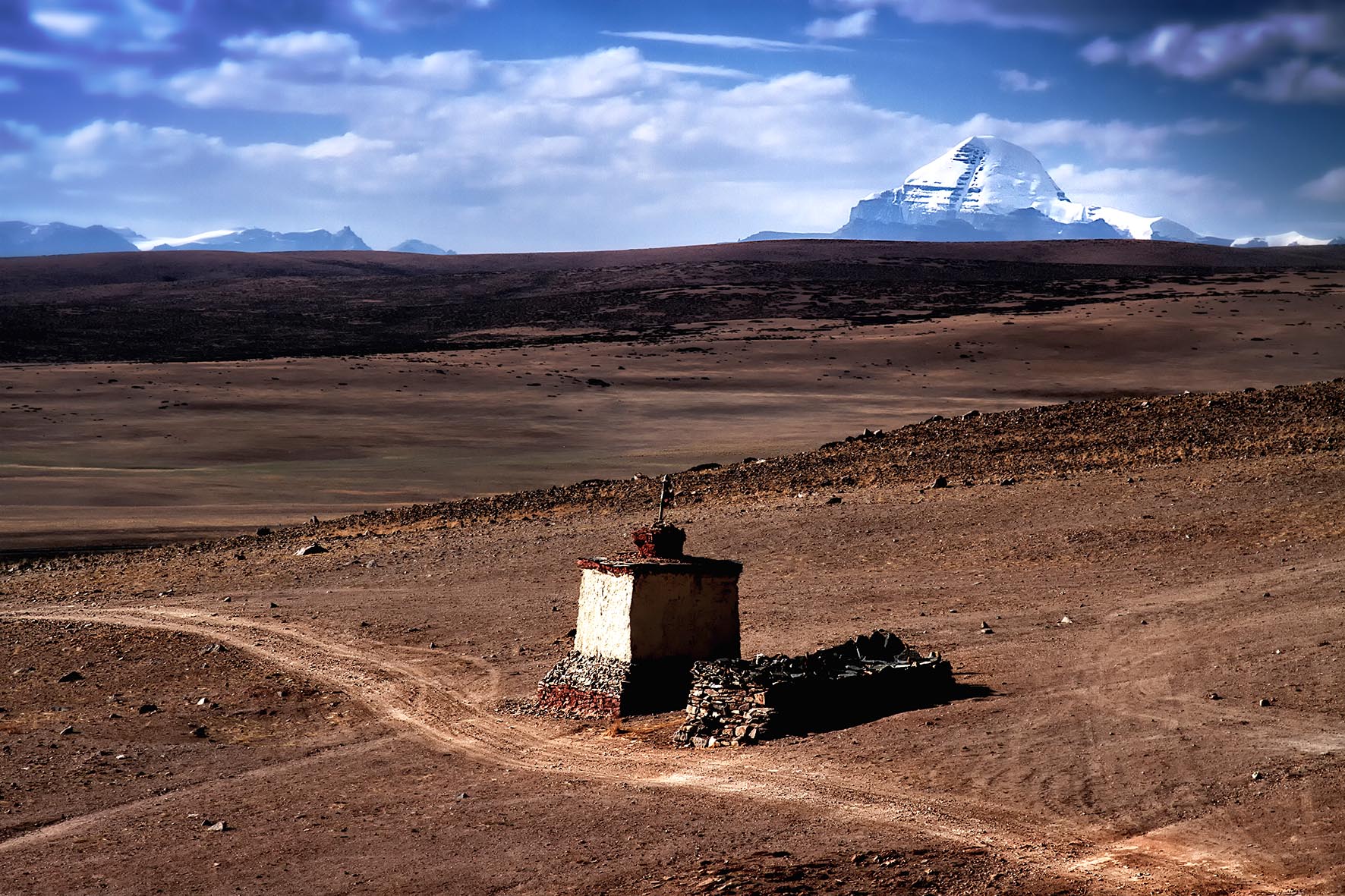 Photo: To Hindus, Mount Kailash is the seat of Lord Shiva
Photo: To Hindus, Mount Kailash is the seat of Lord Shiva
Buddhists, on the other hand, associate Mount Kailash with Milarepa (1052 AD), a teacher of Tantric Buddhism, who challenged Naro Bon-Chung, champion of the pre-historic Bon religion of Tibet. Their debates, having resulted in no conclusive supremacy, led to an agreement that whoever reaches the summit of Mount Kailash first would be considered the victor and his philosophy would prevail in Tibet. Naro Bon-Chung used magic drums to rapidly ascend, while Milarepa sat at the base of the mountain in a deep meditation. Breaking his trance, he suddenly moved into action and rode on the rays of the sun that had started to descend from the top of the mountain – reaching the mountaintop before Naro Bon-Chung. At the peak, he picked some snow and threw it on the top of a nearby mountain, called Bonri, signifying that even though Tantric Buddhism would become supreme in Tibet, the Bon religion would continue to have a footprint.
For the followers of Bon, a religion that predates Buddhism, it is their belief that the entire region of Kailash and it’s surrounding lakes are a seat of spiritual power. Jainism, a religion from India, associates the region with their first teacher, Tirthankara Rishabhdeva. It is here that he is believed to have achieved spiritual liberation.
Like the spiritual aspects of Mount Kailash, lake Mansarovar too finds it’s importance in many religious beliefs. In Hindu mythology, Mansarovar was carved by Brahma (the god of creation) for his Son to bathe in after meditating at the nearby Mount Kailash. Metaphysically, Mansarovar (Manas, meaning “mind”; Sarovar, meaning “lake”) is where one finds a sacred goose (or swan) called Hamsa whose whiteness symbolizes purity. For Buddhists, the lake is associated with Maya, Buddha’s mother, who is believed to have conceived Buddha around this lake. It is also believed that later in his life, Buddha himself visited the lake.
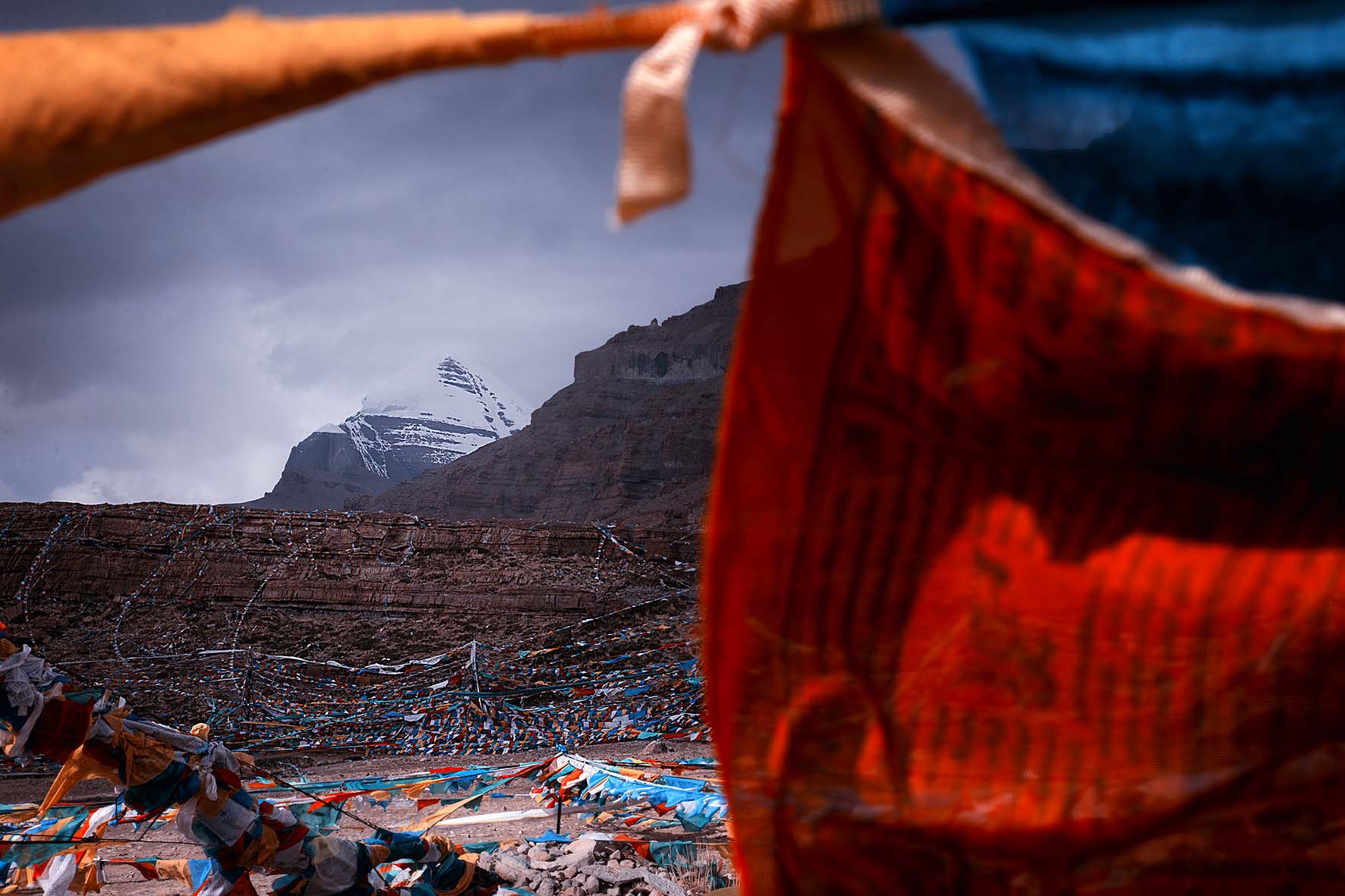
Photo: Mount Kailash finds it’s importance in many religious beliefs
Guru Nanak, the first Guru of the Sikh faith, which was founded in the plains of Punjab in India & Pakistan, is also believed to have traveled to Tibet and stayed around the lake Mansarovar. The Sikh scripture , Guru Granth Sahib, says that while spiritual seekers search the unfathomable presence of God by visiting worldly places like temples, mountains, lakes, and so on, but with a right frame of mind, God can be well realized within oneself in any place.

Rakshastal, whose Tibetan name Lagngar Co, has a similar sounding to the name “Lanka” from the country Sri Lanka. In Hindu mythology, it is believed that Sri Lanka was once ruled by Ravana, a ten-headed demon king. Ravana confronted Rama, the God king, and this is described in the Hindu mythological scripture, the Ramayana. According to Hindu belief, Ravan created Lake Rakshastal to gain supernatural powers by meditating on it’s banks, in close proximity to Mount Kailash. With this association with Ravana and its lifeless waters and gusting winds, the lake is given a wide berth by spiritual seekers, who have no desire to be drawn in by its negative energy. Yet the lake remains a sepctacular natural wonder, despite its notorious image. After all, it too is God’s own creation!
Profoundness of belief, mythology and history of this region were also the reason why the majority of the monasteries here were destroyed during the Chinese cultural revolution of 1966 to 1976. Chairman Mao, who led the movement, is believed to have said, “Religion is poison”. Not only were the Tibetan Buddhists not able to practice their beliefs for years after the revolution, the region was also closed to Hindu and Jain spiritual seekers from India. No foreigners were allowed in this area till the 1980. Even now, travel in Tibet remains highly restricted and requires a lot of planning.
However the true personality of a place lies in it’s power to consistently influence it’s believers. Tibet has again started attracting Hindus, Buddhists, Jains and Bon followers. Today’s generations yearn to experience the aura of this terrain.
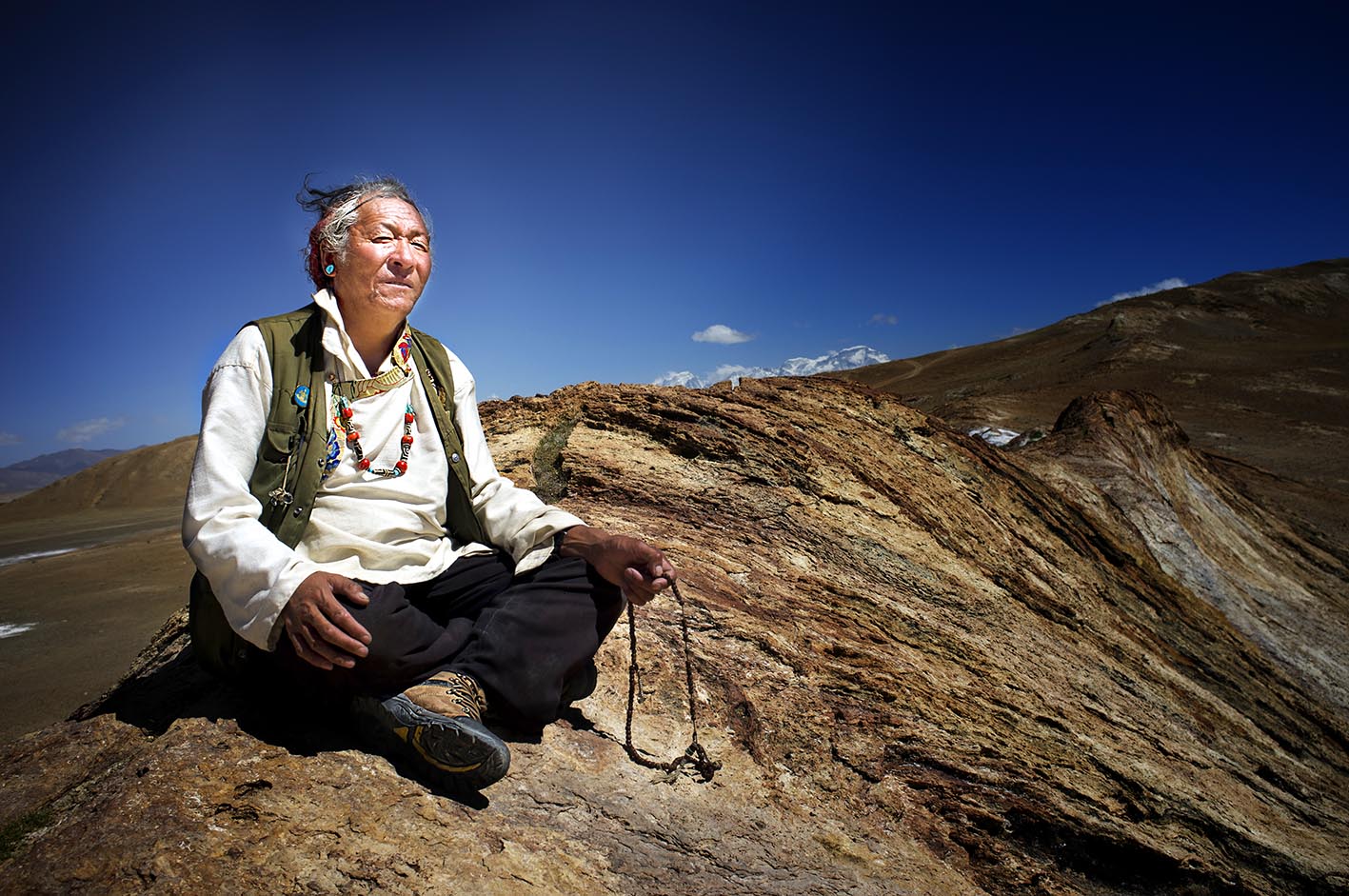
Photo: True personality of a place lies in it’s power to consistently influence it’s believers
Lama Anagarika Govinda, in his book The Way of the White Clouds, summarizes the essence of this region perfectly : “Take away a few thousand feet from the altitude of Mount Everest, or any of the other famous big mountains of the Himalayas, and nothing outstanding would remain of them; they would simply disappear from the map and merge into the myriad of unknown or unnoticed peaks and mountain massifs, But even if one would take away a few thousand feet of Mount Kailash, it still would retain its importance, its unique central position in the general pattern of mountain ranges and the river systems of Tibet and India”.

Comments(25)
Dhiraj says:
August 29, 2013 at 4:09 PMOutstanding write up and brilliant images! Congratulations on becoming a regular contributor to National Geographic.
Mohindra Chadha says:
August 30, 2013 at 12:35 PMYour prose matches your skills with the camera. A SUPERB contribution to the Asia Geographic Magazine for the benefit of a large readership.I admire your virtuosity.
Chadha uncle
Devjit Bhattacharya says:
August 30, 2013 at 1:40 PMCongratulations on becoming a regular contributor to National Geographic. Great Article. I learnt the importance of the Profoundness of belief, mythology and history with interesting pictures. Thanks!
Madanjit & Monya Singh says:
September 3, 2013 at 1:12 PMAnother outstanding article with vivid photography brilliantly captured the stark terrain and vibrant colours of sky earth and prayer flags. Amardeep your narrative made he subject come alive… Keep up the great work.
Karamjeet Singh says:
September 7, 2013 at 12:41 PMAmardeep bought out a very scholarly and informative article.He has not only given a geographical presence of the lakes and its terrain but explained its significance in popular folklores relating to Gods,Demons and the aura of mysticism.Guru Nanak the First Guru of Sikhs(1469-1530)before settling down at Kartarpur(now in Pakistan) visited lot of these remote places to study and dialogue with practitioners of religious orders.In line with Guru footprints Amardeep is reaching out to these far off places and exploring it with modern technology and skill of his art.Congrats! For nice coverage.kjs
Uma says:
September 27, 2013 at 2:10 PMI expected to see something written on Dolma Pass, Charan Sparsh, the inner parikrama route and the villagers in that area… have you covered these in any other post?
dipikasen says:
September 27, 2013 at 5:20 PMMany facts you have given are already known….but your writing style compels one to read till the last. Some unknown facts (to me)were really interesting…Shiva Himself must have inspired you to write this piece. II Om namah Shivaye II
Rick Panesar says:
October 21, 2013 at 6:13 AMGreat blog post, I have now added Mount Kailash on my list of places to see before I die!
Goonpreet singh says:
October 22, 2013 at 4:14 PMSpeel bound by the way u have captured Beauty ..gr8 and intresting coverage — Look forward to c more in this Style so simple yet stricking .. Cheers !!
Vijayan says:
May 29, 2014 at 10:35 AMEverything is there for a reason which we do not know except Lord Shiva!
lumle says:
September 10, 2014 at 8:28 PMMount Kailash indeed such a sacred site one must visit in a lifetime. I visited this coveted sacred site in 2013 leading a British group of 30 people through Lumle Holidays Ltd., UK. The trip I we went through was http://www.lumle.com/activities/kailash-mansarovar/
I again would like to visit Mount Kailash possibly in 2015 if Lord Shiva permits?
Bahadur Singh says:
December 1, 2016 at 2:59 PMYour writing and photographs always give me goosebupms. Again thank you for this amazing article and photos.
Ajay Tripathi says:
December 1, 2016 at 5:04 PMSuperb photos and description. I came to know more about Kailash and Mansarover today than what I knew before!
Gurvinder Singh says:
December 1, 2016 at 5:42 PMAs I viewed the photos and read your article, absorbing it,
I felt this wonderful tingling going up and down my spine.
Informative, exciting and stimulating.
Thank you, blessed one
Gurvinder Singh
amarjeet kaur says:
December 1, 2016 at 9:31 PMAmardeep,your article is really very nice….. Photographs are amazing….. Once I started to read your arrival, couldn’t leave till complete….. I hope you had an amazing moment to see directly Kailash by your eyes…..wonderful….. Thanks for the beautiful photos and articals…..
Raj Mehta says:
December 6, 2016 at 10:36 PMOne of the best, most detailed coverages I have read on the Kailas phenomenon. The pics are also something else. A great effort that needs to be saluted and passed on. Amarddep, many salutes.
kishore kumar biswas says:
December 12, 2016 at 2:03 AMOur words are not sufficient to express our feelings on this pictorial feature about a mystic land . That carries history of interesting diversity of human civilization. It is the confluence of many tributaries of spiritual thought of human society . All those found a solace at a place of nature that is almost ethereal .
All these snaps and notes tells the brilliance of Amardeep Singh ji’s intellect and the marvel of his photographic skill .
Thanks with regards for enriching us with this excellent feature .
Uma Srinivasan says:
December 26, 2016 at 8:14 AMThis is simply amazing. The write up complements the brilliant photography. I was transported to Mt Kailash
rajiv says:
March 13, 2017 at 4:53 AMThank you for sharing your narrative as well as visuals… woven with rasaa,
Bala says:
April 13, 2017 at 1:17 AMAmazing article and amazing pictures. Gave a feeling of being there!
Kausalya says:
June 24, 2017 at 3:03 PMThank you for the article. It will help me to look at the landscape and topography closely while I try to imbibe the generous dose of spirituality when I visit Kailash-Manasarovar in August this year.
Arunabh says:
September 6, 2018 at 3:02 PMOutstanding photography…
…and a very well written narrative !!
Munisamy Vivekanandan says:
March 28, 2019 at 7:33 PMOutstanding photographs, Creative writings, wonderful description with history behind
I want to see with my own eyes the abode of mighty Lord Shiva ever in meditation . The mt Kailash looks like mango Color like against the rIsing sun, a wonderful feast for the eyes.
No doubt the divinity is within us; otherwise we will all be dead I am 70 plus but still I have a strong desire to see the serene. Mountain with my own eyes. After the perusal of the photographs in nature as well as that of satellite,. I personally have a feeling that I have visited the Kailash myself. Glory to my innate and passion- personified mighty Lord Shiva who stands topmost among Vishnu and Brammhan.
Anil Saigal says:
July 16, 2022 at 2:47 AMAmazing photography of the most sacred land on the planet, and with wonderful prose! My compliments! I long to visit there myself and bathe in the divine silence. Maybe still in this lifetime …..
Anil Saigal says:
July 16, 2022 at 2:48 AMAmazing photography of the most sacred land on the planet, and with wonderful prose! My compliments! I long to visit there myself and bathe in the divine silence. Maybe still in this lifetime …..